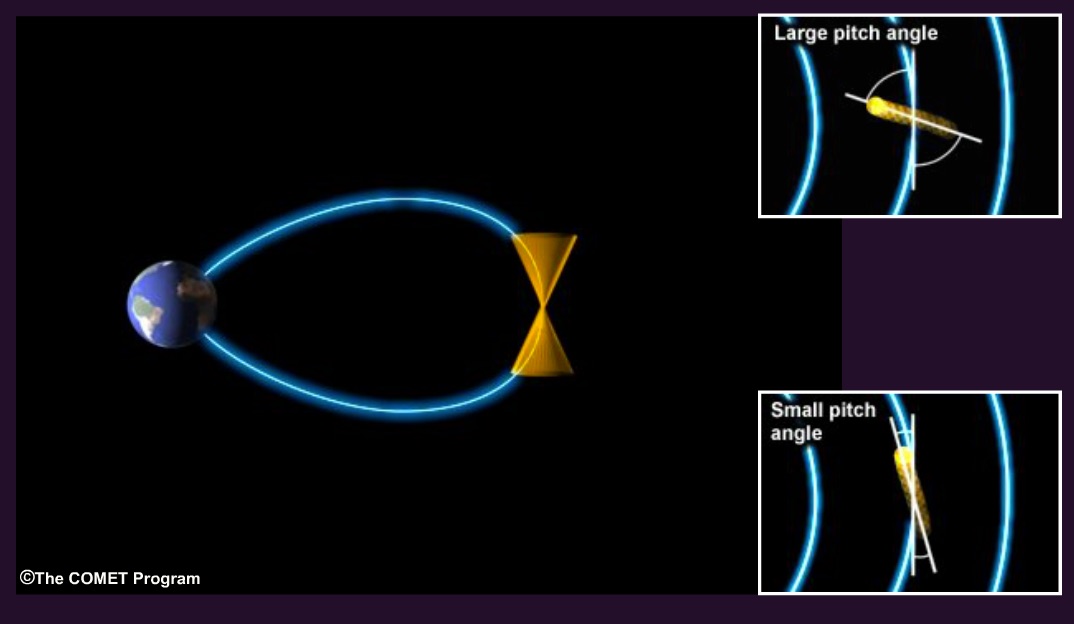
MetEd/Comet
http://www.meted.ucar.edu/hao/aurora/aurora1.htm
(free membership; Physics of the Aurora - Earth Systems; Magnetosphere, Section 3.2)
| INTRO:
PLASMA |
MAGNETISM |
SOLAR WIND |
CORONAL MASS
EJECTIONS (CMEs) |
SOLAR
FLARES |
DYSTOPIA |
MAGNETOSPHERE |
INTERACTION |
ATMOSPHERE |
COLORS |
DETECTION |
BIBLIOGRAPHY |
 |
It
turns out that only particles that traveling at low
pitch angles (fairly parallel) to earth's magnetic
fields will barber-pole down to lower altitudes in what
is called the LOSS CONE. Large pitch angle
particles will bounce and loop about above the equator,
trapped in a mirror of magnetic fields that hem them
in. The closer the magnetic field line is to
earth, the broader the loss cone is, funneling more
particles into our view. MetEd/Comet http://www.meted.ucar.edu/hao/aurora/aurora1.htm (free membership; Physics of the Aurora - Earth Systems; Magnetosphere, Section 3.2) |
| As
you would expect given how every step of our solar
particle path has involved electromagnetism, the
main layer of the earth's atmosphere that is the
canvas for the aurora, the thermosphere, largely
contains the part that is made of electrically charged
(ionized) gas particles, also known as the ionosphere.
Per Neil Davis, the aurora occurs from 40 miles
to several hundred miles above our heads [12, p.
4]. The
ionosphere is largely within the thermosphere. [27] The gas composition of the ionosphere and thermosphere vary by day/night cycles, seasons, and solar sunspot cycles. [28] This is another area that is currently being studied, even at UAF. However, the predominant gases at different altitudes usually correlate with their masses as you can see below by how far to the right each particle's line is at different altitudes.
Our atmosphere is 78% nitrogen and 21% oxygen and 1% other gases. However, you can see from the charts above that the composition of our upper atmosphere generally correlates particle mass to altitude, although still affected by the interactions of charged particles. The ionosphere is basically the result of ionization of the neutral thermosphere. The heavy molecules of N2, O2 and NO dominate the lower altitudes and lighter atomic O and N are more common at the upper altitudes. |
 |
||||
| National Weather Service http://www.srh.noaa.gov/jetstream/atmos/layers.htm |